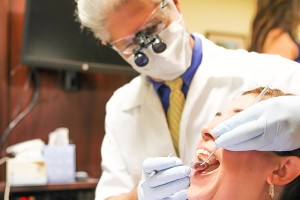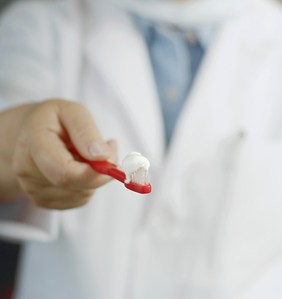 Scientists have known mercury to be highly poisonous for at least a century and a half. This knowledge has not stopped its use in filling cavities, however. Knowing the danger is half the battle, so it is important to fully understand the problems with mercury and the harm it can do when it gets into your bloodstream. Let’s talk a bit about the effects of mercury on your system so you can have a well informed discussion with your (hopefully mercury safe) dentist.
Scientists have known mercury to be highly poisonous for at least a century and a half. This knowledge has not stopped its use in filling cavities, however. Knowing the danger is half the battle, so it is important to fully understand the problems with mercury and the harm it can do when it gets into your bloodstream. Let’s talk a bit about the effects of mercury on your system so you can have a well informed discussion with your (hopefully mercury safe) dentist.
To being, mercury is highly toxic to people and mercury poisoning can cause very serious consequences, can even be fatal in some circumstances. Besides death, mercury poisoning causes loss of senses, including hearing and taste, peripheral neuropathy, skin discoloration and peeling, swelling, dizziness, confusion, and erratic behavior. Mercury is considered toxic by the FDA, yet millions of people walk around with significant amounts of mercury in their mouths, completely unaware. Studies have shown that such everyday actions as eating, drinking hot liquids, and teeth brushing, can release minute amounts of mercury from mercury fillings. The released mercury is both inhaled and swallowed. It then slowly builds up in the body to wreak havoc.
You should be able to trust that your dentist will not do anything to place your health at risk. If your dentist wants to place mercury filling in your mouth, and so-called silver amalgam fillings are made primarily of mercury, this is a huge red flag that they are ignoring important safety warnings. Many years ago, mercury was the most durable and easily placed materials available for fillings, but today there are many alternatives that are at least as durable and easy to place. There really is no good reason to use mercury at all. Mercury is dangerous and can be detrimental to your health. If your dentist places mercury fillings, maybe this is a good time to start looking for a dentist that truly makes your health a priority.
More – biocompatibledentist.org/holistic_dentistry/ & http://www.icc.org/details/16257547.html
 The United States of America is a very large country, and there are many different opportunities for businesses, companies, and start ups all over. Although we are very proud to be innovators here in Chicago when it comes to start ups, it would be foolish to deny that there are no other places just as dynamic – although of course, in very different ways. San Diego, for example, has often been a very magnetic area for those that want to try out their new company ideas, and many start ups are born there, live there, and sadly die there. So what makes it difficult to make start ups work in other cities?
The United States of America is a very large country, and there are many different opportunities for businesses, companies, and start ups all over. Although we are very proud to be innovators here in Chicago when it comes to start ups, it would be foolish to deny that there are no other places just as dynamic – although of course, in very different ways. San Diego, for example, has often been a very magnetic area for those that want to try out their new company ideas, and many start ups are born there, live there, and sadly die there. So what makes it difficult to make start ups work in other cities? Injectable dermal fillers can help you look younger for much less than a surgical facelift and without the risks or recovery time of surgery. Most fillers take effect in less than half an hour and last anywhere from 4 months to over a year.
Injectable dermal fillers can help you look younger for much less than a surgical facelift and without the risks or recovery time of surgery. Most fillers take effect in less than half an hour and last anywhere from 4 months to over a year. That title got your attention, didn’t it? If you were asked about the most dangerous item in your home, you might talk about knives, lighters, stove, or cleaning chemicals. What you don’t know is that one of the most dangerous items in your home is one you readily put into your mouth twice a day. If you’re wondering how your toothpaste can possibly be more dangerous than some other items in your home, keep reading.
That title got your attention, didn’t it? If you were asked about the most dangerous item in your home, you might talk about knives, lighters, stove, or cleaning chemicals. What you don’t know is that one of the most dangerous items in your home is one you readily put into your mouth twice a day. If you’re wondering how your toothpaste can possibly be more dangerous than some other items in your home, keep reading. It may seem to be a long way away, the other side of the Christmas season, but the new year of 2015 is fast approaching. It will be here far faster than you realise, and then you will discover that you have not had any time to really think about your New Year Resolutions. Many people make them every year, and really try to stick to them throughout the next twelve months . . . but more often than not, they are quickly forgotten by the middle of January, as real life starts to invade all of the happy thoughts that we made on January 1st.
It may seem to be a long way away, the other side of the Christmas season, but the new year of 2015 is fast approaching. It will be here far faster than you realise, and then you will discover that you have not had any time to really think about your New Year Resolutions. Many people make them every year, and really try to stick to them throughout the next twelve months . . . but more often than not, they are quickly forgotten by the middle of January, as real life starts to invade all of the happy thoughts that we made on January 1st.